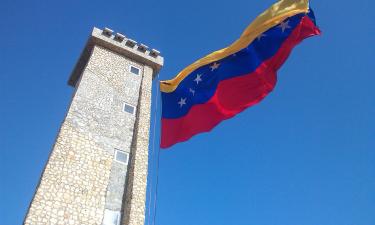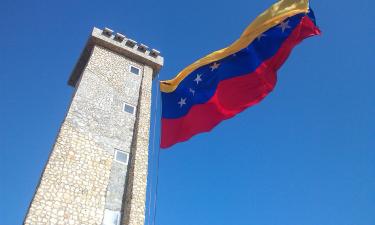Trip to Earth Core: Myth or Reality?
The principle suggested by David Stevenson is an exact antithesis of volcano eruption
A New Zealand planetary scientist David Stevenson caused turmoil in the geological society as he offered to probe not the space but the core of the planet. According to Le Monde, the fantastic project is not yet thoroughly developed.
"At first the idea was declared ridiculous, now it is said to be unfeasible. This is quite a progress!" Planetary scientist David Stevenson, who is working in Pasadena, is satisfied with the effect the suggestion produced. On May 15 the Nature journal published the suggestion of the scientist to send a probe in a bubble of molten iron to the Earth core.
The modest proposal drew attention of the geological society that is seldom shocked with revolutionary ideas. In fact, geologists never had an idea how they could penetrate into the core of the planet. The planetary scientist says that geologists traditionally consider the action too expensive or too difficult. David Stevenson started working at the California Institute of Technology in 1980. He adds: "The mode of thinking is quite different with those people who deal with space exploration: thanks to the competition between the West and the East, the sphere was substantially invested. That is why scientists dealing with space exploration treat ideas of this kind differently."
The scientist studying formation of the Solar system planets got inspired with this experiment when he developed a scenario of his own. The Core, a recently shown film about a scientific expedition to the core of the planet inspired the scientist for formulating an idea that had been captivating him within several years. The scientist tells that an agent from the Paramount film studio contacted him and asked to answer several questions concerning the film. "I said it would be interesting; in December I wrote an article on the subject just within a day." Further the calculations were made more exact, but the main idea concerning the project was already outlined. The proposal said: first it is necessary to cleave the Earth crust and pour 100,000 tons of molten metal into it; the metal will then deepen the tunnel and draw a probe or probes down to the core. The probe, the scientist thinks, would allow to take temperature, pressure and compositions reading; the information would be conveyed with the help of acoustic waves. Such an underground capsule would be able to reach the core of the planet within a week, as 99.99 percent of the work would be done with the help of Earth's attraction.
The principle suggested by David Stevenson is an exact antithesis of volcano eruption that ejects lava streams to the surface. As lava is less thick than the environment, it goes up while Stevenson's metal bubble would submerge under the effect of an opposite phenomenon.
The now popular theory says that the metal core of the Earth was formed thanks to this mechanism, but the scientist doesn’t think the idea is credible. The proposition of Stevenson causes much enthusiasm with the laity than with specialists who "are not that critical, but at the same time are not jumping with joy about the new idea that must be immediately carried out."
Is the idea feasible? The scientist admits that the first stage of the experiment (drilling of a deep tunnel in the Earth crust) is still the phase that is not thoroughly studied. David Stevenson doesn't hope that his modest proposal will be carried out in the nearest years. He says that this is just an outline of a concept that can be studied thoroughly in about ten years. May it be so that the scientist wants to join the list of great dreamers?
Subscribe to Pravda.Ru Telegram channel, Facebook, RSS!




